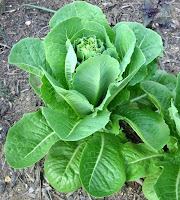 In September, a four day convention in Chicago yielded a few side trips as a tourist. A visit to Oak Park where Frank Lloyd Wright built his first house and opened his studio on his own was the first stop. A second trip downtown to the Art Institute and nearby Millenium Park was an eye-opener.
In September, a four day convention in Chicago yielded a few side trips as a tourist. A visit to Oak Park where Frank Lloyd Wright built his first house and opened his studio on his own was the first stop. A second trip downtown to the Art Institute and nearby Millenium Park was an eye-opener.  Although architecture and art were the primary targets for the trips, gardens and greenery were also experienced. Since this is a garden blog, I will concentrate on the botany in my trips.
Although architecture and art were the primary targets for the trips, gardens and greenery were also experienced. Since this is a garden blog, I will concentrate on the botany in my trips.These urns were outside the entrance to the Wright Studio. Potato vines and ornamental grasses (or is it millet) lend grace and life, and easily blend with Wright's more organic architecture.
 Frank Llyod Wright was an architect that was noted for his 'prairie style' of architecture, building on low, horizontal, modern forms. The neighborhood around his home includes a handful of his earlier residential work, and really brings home how radical he was. His houses were built in the same era as the neighborhood's stately turn-of-the-century Victorian ladies, providing a contrast and context to the times he began his practice.
Frank Llyod Wright was an architect that was noted for his 'prairie style' of architecture, building on low, horizontal, modern forms. The neighborhood around his home includes a handful of his earlier residential work, and really brings home how radical he was. His houses were built in the same era as the neighborhood's stately turn-of-the-century Victorian ladies, providing a contrast and context to the times he began his practice. In Frankie's original sketches and drawings, one always seems to find large decorative urns and planters overflowing with greenery and vines. These were very popular at that time with Victorians so they were probably requested by some clients. They also suited Wright's architecture by bringing some 'decorative' softness to what some considered at the time to be stark modern architecture.
In Frankie's original sketches and drawings, one always seems to find large decorative urns and planters overflowing with greenery and vines. These were very popular at that time with Victorians so they were probably requested by some clients. They also suited Wright's architecture by bringing some 'decorative' softness to what some considered at the time to be stark modern architecture. The bigger the urns, the more difficult it is to find the types plants to fulfill Wright's sketches. I was happy to see the homes at the end of the season when the vines and arching plants in the urns were at the height of their beauty and fullness - overflowing like Wright had imagined them. What was also a pleasure to see were the shady large leaf plantings of the Victorians front yards.
The bigger the urns, the more difficult it is to find the types plants to fulfill Wright's sketches. I was happy to see the homes at the end of the season when the vines and arching plants in the urns were at the height of their beauty and fullness - overflowing like Wright had imagined them. What was also a pleasure to see were the shady large leaf plantings of the Victorians front yards. Victorians liked welcoming front porches. Get a load of this one. My house could fit on this porch.
Victorians liked welcoming front porches. Get a load of this one. My house could fit on this porch.  And those mega-urns? In order to properly scale the walk to the front door for such a massive entry, the approach sidewalk is about 20-feet wide (6m) with a small planted median down its center.
And those mega-urns? In order to properly scale the walk to the front door for such a massive entry, the approach sidewalk is about 20-feet wide (6m) with a small planted median down its center. But the biggest urns of all were found at the front entrance to the Art Institute in downtown Chicago. These mamas were larger than a hot tub. A few bags of potting soil would not do. I had to include the people in the photo to show scale, since the lions were super-sized, too.
But the biggest urns of all were found at the front entrance to the Art Institute in downtown Chicago. These mamas were larger than a hot tub. A few bags of potting soil would not do. I had to include the people in the photo to show scale, since the lions were super-sized, too.Garden Calendar: • Blooming: Mexican zinnia, calendula, nicotiana, pink cosmos • Harvested 8 tomatoes, 9 bell peppers before frost |














































